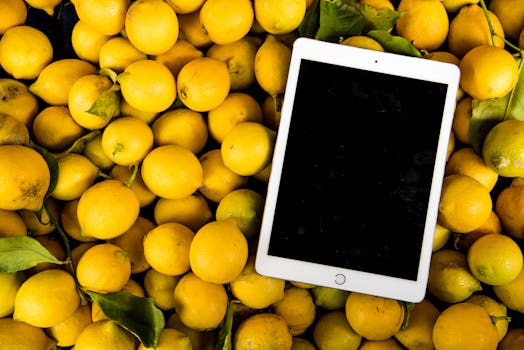Food Safety in the Digital Age: Challenges and Solutions
Food safety has always been a top priority for the food industry. From farm to table, every step in the food production and distribution process must adhere to strict safety guidelines to ensure the protection of consumers. However, with the rise of the digital age and the increasing use of technology in the food industry, it has become more challenging to maintain and monitor food safety. In this article, we will explore the challenges that the food industry faces in ensuring food safety in the digital age and the solutions that can help overcome them.
The Impact of Technology on Food Safety
The digital age has ushered in a new era of convenience and efficiency, allowing businesses to streamline their processes and enhance productivity. In the food industry, technology has revolutionized the way food is produced, distributed, and consumed. From automation and robotics in food production to the use of data and analytics in supply chain management, technology has significantly improved the efficiency and cost-effectiveness of the food industry.
But with these advancements comes a new set of challenges and risks, especially when it comes to food safety. Here are some of the major challenges faced by the food industry in the digital age:
The Rise of E-Commerce
The COVID-19 pandemic has accelerated the shift towards online shopping and home delivery services. As a result, the food industry has seen a significant increase in e-commerce and food delivery platforms. These platforms offer convenience and speed, but they also introduce new challenges to food safety. With more people purchasing food online, there is a higher risk of contamination during the delivery process. Additionally, the lack of physical interaction between consumers and food handlers can lead to a decrease in quality control and monitoring of food safety.
Supply Chain Complexity
Technology has enabled businesses to expand their reach and source ingredients and products from different regions and countries. While this has opened up new opportunities for growth, it has also created a complex and diverse supply chain. With multiple intermediaries involved in the production and distribution process, it becomes challenging to trace the origin of food and monitor its safety. This complexity also makes it difficult to respond quickly in case of a food safety issue.
Food Fraud
The use of technology in food production has also made it easier for fraudsters to manipulate and counterfeit food products. From mislabeling to the use of unauthorized additives, food fraud poses a significant risk to consumer health and safety. With the vast amount of food produced and distributed globally, it is difficult to detect and prevent food fraud, making it a major challenge for the food industry.
Solutions for Ensuring Food Safety in the Digital Age
While these challenges may seem daunting, there are various solutions and strategies that businesses can adopt to ensure food safety in the digital age. Here are a few examples:
Blockchain Technology
Blockchain technology provides a secure and transparent system for tracking and tracing the origin and movement of food products. With this technology, businesses can create a secure digital ledger that records every step of the food supply chain, making it easier to identify and address any food safety issues.
IoT and Sensors
The Internet of Things (IoT) and sensors can be used to monitor and track food products throughout the supply chain. These devices can monitor factors like temperature, humidity, and handling conditions to ensure that food is stored and transported in optimal conditions, reducing the risk of contamination.
Artificial Intelligence (AI)
AI-powered inspection tools can analyze food products’ physical and chemical properties, providing an automated and accurate detection of contaminants or other safety concerns. AI can also review and analyze large amounts of data, making it easier to identify potential food safety risks and take proactive measures.
Training and Education
Lastly, businesses in the food industry must prioritize training and educating their employees on food safety practices in the digital age. With new technology and processes constantly emerging, it is crucial to keep employees updated and informed on the latest safety regulations and procedures.
In Conclusion
Technology has undoubtedly brought about many benefits to the food industry, but it has also presented significant challenges, especially when it comes to food safety. By adopting the right solutions and strategies, businesses can ensure that the benefits of technology outweigh the risks when it comes to the safety of the food we consume. With the right tools and practices in place, we can continue to enjoy the convenience and efficiency of the digital age without compromising on food safety.









